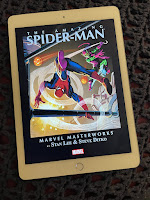 The fifth novel in John D. MacDonald's classic Travis McGee series, A Deadly Shade of Gold, has boat bum, philosopher, and occasional (read: when he needs the money) investigator McGee chasing after ancient gold statuettes and clues to unravel who killed his friend Sam Taggart. Joining McGee in the adventure is Taggart's ex-fiancee Nora, who was on the cusp of renewing her romance with Taggart when his brutal murder put a damper on things.
The fifth novel in John D. MacDonald's classic Travis McGee series, A Deadly Shade of Gold, has boat bum, philosopher, and occasional (read: when he needs the money) investigator McGee chasing after ancient gold statuettes and clues to unravel who killed his friend Sam Taggart. Joining McGee in the adventure is Taggart's ex-fiancee Nora, who was on the cusp of renewing her romance with Taggart when his brutal murder put a damper on things.
Like the four books that preceded it, this travel-heavy fifth entry in the series (we spend time in Mexico, California, and New York, in addition to McGee's native Florida) is gritty, detailed, and enjoyable, but for my tastes things got a little bogged down with politics (particularly involving Cuba of the 50's and 60's), too-complicated plotting, and excessive philosophizing my our man McGee. Plusses include well-rounded women characters (pun sort of intended) and many tense confrontations and escapes.
While this slightly overlong tale is my least favorite among the first five books in this 21-book series (I'm finally discovering this series via reading each of its entries in order), all that means is that I enjoyed the book instead of really enjoyed it. The brisk and scary Nightmare in Pink (with its memorable psycho ward setting) is still my favorite so far. But this tale of the corrupt rich and their ethics-free pursuit of priceless antiquities, and the many violent deaths left in the wake of that pursuit, still largely kept me speeding through its chapters. This is rich, dark fun.
A Deadly Shade of Gold is available on Kindle for $7.99.





